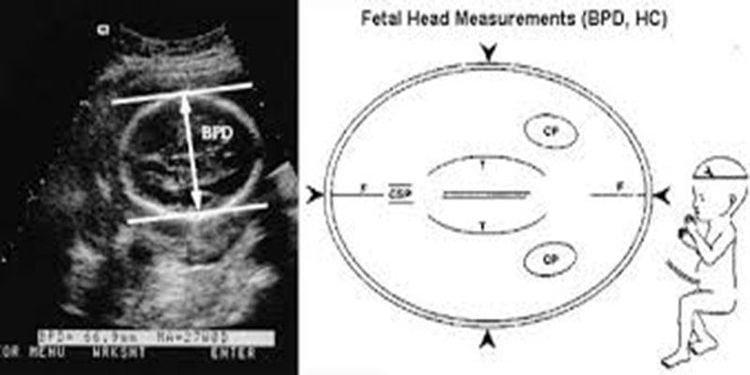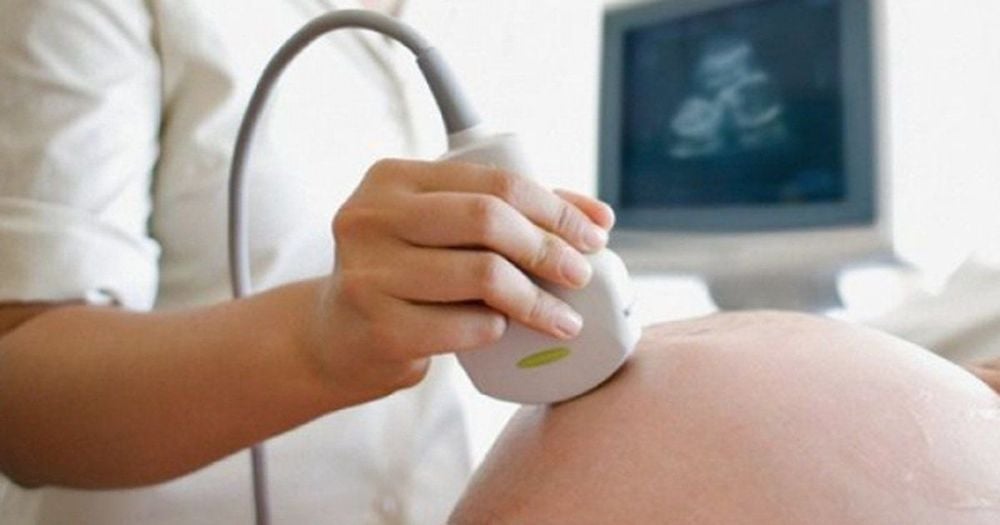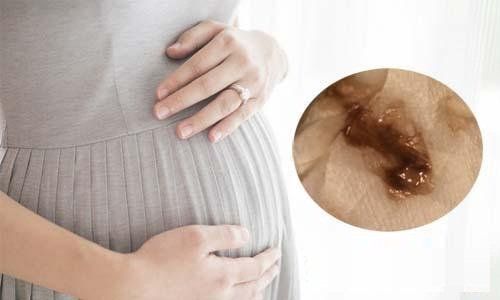This article has been professionally reviewed by obstetricians and gynecologists from the Department of Obstetrics and Gynecology at Vinmec International General Hospital, Hai Phong.
If the biparietal diameter, the fetal head measurement, is larger than normal, a vaginal delivery could pose significant risks for both the mother and baby during labor. However, for more precise assessments, doctors will combine the biparietal diameter measurement with other fetal parameters, such as abdominal circumference and femur length.
1. What is the Biparietal Diameter?
During pregnancy, fetal weight and biparietal diameter are among the key indices measured during ultrasound scans. These measurements help assess fetal growth, weight, and size before delivery.
The biparietal diameter refers to the transverse diameter of the fetal skull, also known as the head circumference. This measurement is obtained via ultrasound by assessing the widest cross-sectional area of the fetal skull.
BPD measurements are most accurate and meaningful between weeks 13 and 20 of gestation. After week 20, while the measurement can still be performed, its accuracy declines. For this reason, pregnant women should attend all prenatal appointments as scheduled to ensure these critical assessments are not missed.

2. What is the Clinical Significance of the Biparietal Diameter for Mother and Baby?
The biparietal diameter, as determined through ultrasound, plays a crucial role in evaluating fetal development by:
- Estimating fetal weight, gestational age, brain health, and overall fetal development.
- Helping to determine whether a vaginal delivery is feasible or a cesarean section is necessary.
Many expectant mothers may be uncertain about the normal range for biparietal diameter measurements. Typically, just before birth, the biparietal diameter ranges between 88mm and 100mm. If the measurement deviates significantly from this range, it may indicate potential issues such as:
- Biparietal diameter smaller than normal: This may suggest a condition known as microcephaly, where the fetal brain is underdeveloped due to restricted skull growth. Babies with microcephaly may experience cognitive and motor development delays.
- Biparietal diameter larger than normal: This situation is more common in first-time pregnancies or in mothers with gestational diabetes, increasing the likelihood of requiring a cesarean delivery.

Fetal weight can be estimated using the biparietal diameter based on the following two formulas:
- Weight (grams) = [BPD (mm) – 60] x 100
- Weight (grams) = 88.69 x BPD (mm) – 5062
3. How Large Does the Biparietal Diameter Need to Be for a Cesarean Section?
If the biparietal diameter falls outside the normal range, either higher or lower, doctors may recommend a follow-up ultrasound or additional diagnostic tests for a more comprehensive evaluation.
In cases where the BPD is significantly larger than normal, a vaginal delivery may be unsafe for both mother and baby. To ensure accurate assessments, doctors will correlate the BPD measurement with other fetal indices, such as abdominal circumference and femur length.
So, what biparietal diameter value necessitates a cesarean section? If the biparietal diameter exceeds 88–100mm, a cesarean delivery may be advised to ensure the safety of both mother and child.
Although biparietal diameter measurements become less accurate in the later stages of pregnancy, they provide a general overview of fetal growth and development. Therefore, expectant mothers should not overlook this measurement during routine checkups, along with other essential fetal parameters.
The second trimester marks a critical period of rapid fetal development. Pregnant women should focus on the following:
- Comprehensive fetal anomaly screening using advanced 4D ultrasound technology.
- Screening for gestational diabetes to prevent severe complications for both mother and baby.
- Maintaining appropriate maternal weight gain to evaluate maternal health and fetal growth effectively.
- Identifying signs of preterm labor, particularly in women with multiple pregnancies or a history of miscarriage or preterm birth, to facilitate timely intervention.
To safeguard maternal and fetal health throughout pregnancy, Vinmec International General Hospital offers comprehensive maternity care packages. These services provide thorough monitoring of maternal and fetal health, regular prenatal checkups with top obstetric specialists, and essential screenings for early detection of abnormalities. Additionally, timely consultations and interventions are provided when health concerns arise.

To arrange an appointment, please call HOTLINE or make your reservation directly HERE. You may also download the MyVinmec app to schedule appointments faster and manage your reservations more conveniently.













